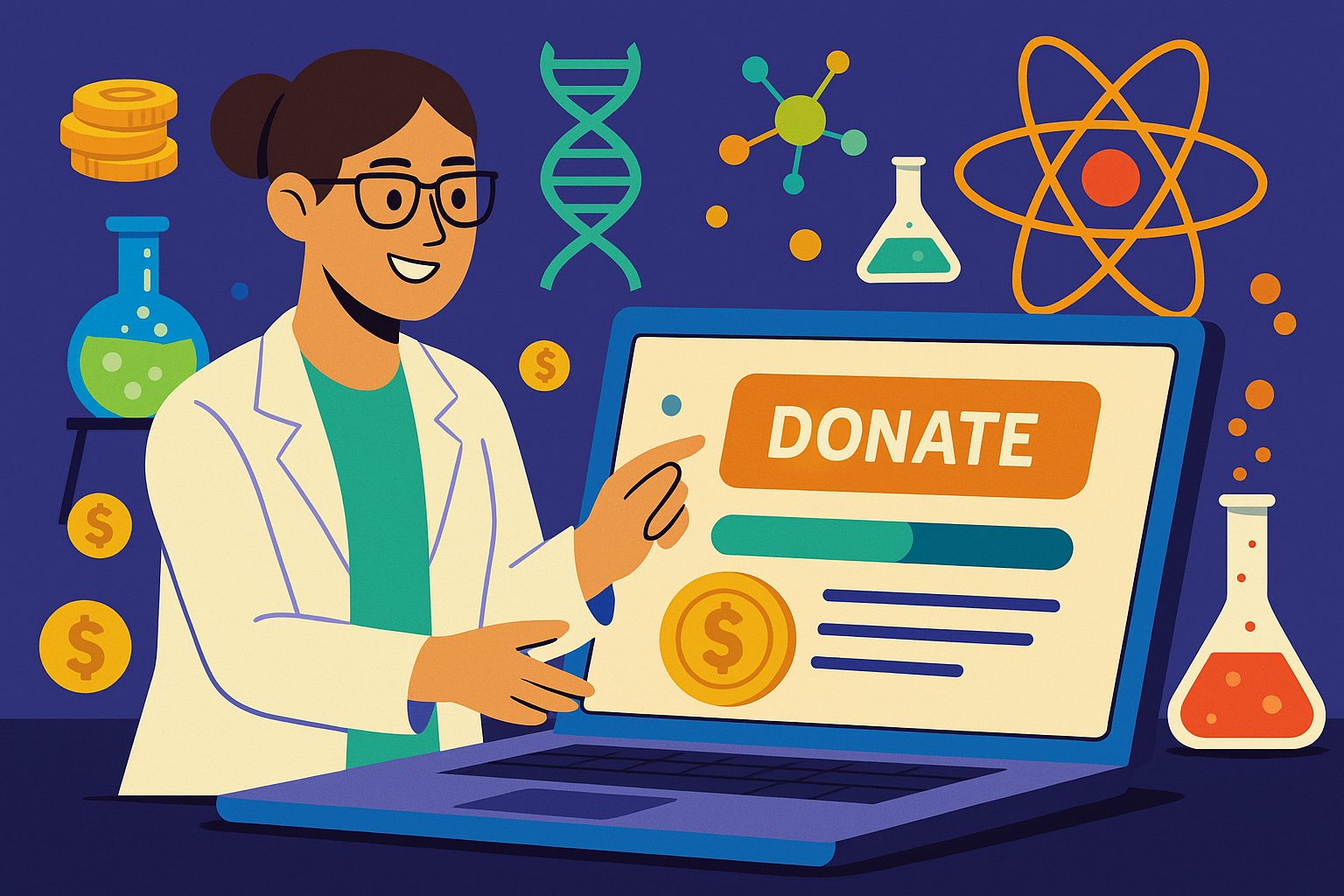Rethinking Research Funding in the Digital Age
In the past, groundbreaking scientific research was tethered to traditional institutions—government grants, university funding, and large foundations. While those sources are still important, they often come with limitations: lengthy application processes, political hurdles, and strict allocation requirements. For many scientists, especially early-career researchers or those pursuing unconventional ideas, securing funding can feel like an impossible gatekeeping system. But in today’s digital age, the power to fund discovery is shifting from the few to the many. Enter scientific crowdfunding—a revolutionary approach that is breaking barriers, fueling curiosity, and accelerating innovation at unprecedented speed.
Crowdfunding has already transformed industries from technology to art, and now it’s reshaping how science gets done. By allowing researchers to reach out directly to the public, scientific crowdfunding bypasses traditional filters and taps into a global audience of people who care about the future of knowledge. It democratizes access to research funding and makes scientific exploration more transparent, more inclusive, and more responsive to societal needs. With the right strategy, a single idea can capture hearts and minds across the world—and turn public curiosity into real-world breakthroughs.
Unlocking the Potential of the Public as Patrons of Science
At the heart of scientific crowdfunding is the idea that the public can—and should—have a direct role in advancing discovery. People donate not just because they’re generous, but because they’re curious. They want to understand climate change, support cancer research, explore space, or help conserve endangered species. When you invite them into the process and speak to their interests in an accessible, engaging way, they become partners in your journey. And in a world where trust in science is constantly tested, that kind of engagement is more important than ever.
Platforms like Experiment.com, Consano, and Kickstarter have made it possible for researchers to present their work in compelling, story-driven formats that inspire action. These platforms allow donors to browse research topics like they might browse a streaming platform—by interest, urgency, or innovation. From decoding ancient genomes to developing sustainable food systems, crowdfunded science covers a vast and growing range of disciplines. Each campaign becomes a conversation, drawing people in not just to donate, but to follow along, ask questions, and feel invested in the outcome.
Speed and Agility in the Research Pipeline
Traditional grant cycles can take months—or even years—to secure funding. That timeline doesn’t align well with fast-moving global challenges, emerging technologies, or urgent questions that need answers now. Scientific crowdfunding offers speed and agility. It lets researchers bypass bureaucratic delays and respond quickly to timely issues—whether it’s a novel virus outbreak, an environmental crisis, or a breakthrough opportunity in the lab that simply can’t wait.
This ability to move fast is especially valuable for pilot studies and proof-of-concept research. With smaller budgets, researchers can collect preliminary data, demonstrate feasibility, and build a foundation for larger institutional grants later. Crowdfunding acts as a launchpad—not just financially, but strategically. It allows scientists to validate their hypotheses in real-world conditions and attract broader support with results in hand.
Reaching Beyond the Ivory Tower
One of the most profound effects of scientific crowdfunding is the way it expands the definition of who can do science—and who can support it. It opens doors for independent researchers, citizen scientists, educators, and interdisciplinary thinkers who may not fit the mold of traditional academia. It also creates space for projects led by underrepresented communities, women in STEM, or researchers from developing nations who often face additional funding barriers.
By decoupling scientific funding from institutional affiliation, crowdfunding fosters a more diverse and dynamic research ecosystem. It allows fresh voices and new perspectives to enter the conversation. And it gives the public a stake in that diversity—letting them support ideas and individuals that resonate with their values. This shared sense of purpose is powerful. It turns science into a collective mission rather than a siloed pursuit.
Telling the Story of Discovery in a Human Way
Science is often portrayed as clinical, abstract, or complex. But at its core, it’s deeply human—a quest for understanding, driven by passion, creativity, and persistence. Scientific crowdfunding gives researchers the opportunity to tell their story in a way that resonates beyond academia. Instead of submitting a proposal filled with jargon and figures, they can speak from the heart. They can explain what drives their curiosity, what problem they’re trying to solve, and how the world might change because of it.
This narrative power is a key ingredient in successful campaigns. Donors don’t give to data—they give to dreams. They support a marine biologist who grew up loving the ocean, or a physicist who wants to democratize access to clean energy. By crafting a story that blends rigor with relatability, researchers can build trust, foster empathy, and inspire action. And in the process, they help rebuild a cultural connection between science and society.
Creating a Feedback Loop Between Researcher and Public
Crowdfunding is not just about funding—it’s about dialogue. Supporters become part of a research community that thrives on transparency and connection. Researchers provide updates, share discoveries, and invite questions. Donors, in turn, offer encouragement, share insights, and spread the word. This feedback loop builds a sense of ownership and enthusiasm that traditional grant models simply don’t allow.
For scientists, this engagement offers more than moral support. It’s a form of peer review, public relations, and long-term networking all rolled into one. It helps refine research questions, test public interest, and prepare for future outreach or policy applications. And because donors are often deeply curious, their questions can even spark new angles of inquiry. What starts as a one-way request for help becomes a dynamic, two-way relationship that enriches the science itself.
A Boost for Science Communication and Literacy
In many ways, scientific crowdfunding is also a public education tool. It encourages researchers to explain their work clearly and engagingly. It challenges them to think about audience, messaging, and visual storytelling. And in doing so, it helps close the gap between scientists and non-scientists—a gap that has long undermined public trust in science.
Campaigns often include videos, graphics, Q&A sessions, and blog-style updates that demystify the research process. They show not just the polished results, but the messy, fascinating process of discovery. This openness helps increase science literacy and empowers people to feel connected to topics that once felt out of reach. Over time, it builds a more informed and supportive public—one that’s more likely to advocate for science in their communities and politics.
Challenges and Limitations to Navigate
While the benefits of scientific crowdfunding are numerous, it’s not without its challenges. Not every campaign succeeds, and some projects struggle to gain traction in crowded digital spaces. Running a campaign takes time, effort, and marketing savvy—skills that many researchers weren’t taught in graduate school. There’s also the risk of overpromising or oversimplifying in an effort to attract donors, which can compromise scientific integrity if not carefully managed.
Moreover, crowdfunding is not a replacement for large-scale funding mechanisms. It works best for small projects, early-stage research, or supplemental funding—not multimillion-dollar trials or infrastructure-heavy studies. Researchers must also be transparent about how funds will be used, how results will be shared, and what backers can expect. Ethical considerations around data privacy, intellectual property, and long-term accountability should be addressed from the outset.
Still, these challenges are not insurmountable. With clear communication, realistic goals, and a strong narrative, scientific crowdfunding can be a powerful complement to traditional models—and a launching point for bigger things.
Real-World Breakthroughs Fueled by the Crowd
Scientific crowdfunding has already left its mark on research history. In one widely publicized case, scientists studying a new antibiotic compound from soil microbes raised funds to fast-track their fieldwork. Another campaign funded a low-cost water testing kit for schools in Flint, Michigan, helping bring national attention to the water crisis. Cancer researchers have raised funds for pilot studies that went on to secure major NIH grants. Astrophysicists have crowdfunded telescope time. Biologists have used crowdfunded drones to monitor endangered wildlife.
These stories are not the exception—they’re the emerging norm. And with each success, more scientists are turning to the crowd not just for money, but for momentum. They’re learning that public engagement doesn’t water down science—it fuels it.
A New Era of People-Powered Science
We are standing at the edge of a scientific renaissance—not driven by elite institutions, but by everyday people who believe in discovery. Scientific crowdfunding is more than a funding mechanism. It’s a cultural shift. It says that research belongs to all of us, not just those with access to labs or legacy grants. It invites curiosity, conversation, and collaboration from every corner of society. And it offers a new blueprint for how we pursue the answers that matter most.
As more researchers embrace this model and more supporters rally behind them, we’ll see a broader, more inclusive research ecosystem take shape. One where ideas are judged not only by academic committees, but by their power to inspire people, solve problems, and move humanity forward. Crowdfunding isn’t the endgame—it’s the spark. The real breakthrough is not just in the science we fund, but in the way we choose to fund it—together.




